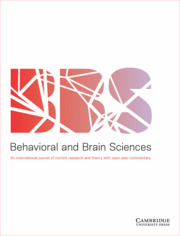Crossref Citations
This article has been cited by the following publications. This list is generated based on data provided by Crossref.
Maricle, Denise E.
Johnson, Wendi
and
Avirett, Erin
2009.
Best Practices in School Neuropsychology.
p.
598.
Barber, Sarah J.
and
Rajaram, Suparna
2011.
Collaborative memory and part-set cueing impairments: The role of executive depletion in modulating retrieval disruption.
Memory,
Vol. 19,
Issue. 4,
p.
378.
McCabe, David P.
and
Loaiza, Vanessa M.
2012.
The Wiley‐Blackwell Handbook of Adulthood and Aging.
p.
154.
Naglieri, Jack A.
and
Otero, Tulio M.
2014.
Handbook of Executive Functioning.
p.
191.
Duggan, Emily C.
and
Garcia-Barrera, Mauricio A.
2015.
Handbook of Intelligence.
p.
435.
Piccolo, Luciane da Rosa
Arteche, Adriane Xavier
Fonseca, Rochele Paz
Grassi-Oliveira, Rodrigo
and
Salles, Jerusa Fumagalli
2016.
Influence of family socioeconomic status on IQ, language, memory and executive functions of Brazilian children.
Psicologia: Reflexão e Crítica,
Vol. 29,
Issue. 1,
Barcelos Amaral, Rúbia
and
Hollebrands, Karen
2017.
An analysis of context-based similarity tasks in textbooks from Brazil and the United States.
International Journal of Mathematical Education in Science and Technology,
Vol. 48,
Issue. 8,
p.
1166.
Buczyłowska, Dorota
Petermann, Franz
and
Daseking, Monika
2020.
Executive functions and intelligence from the CHC theory perspective: Investigating the correspondence between the WAIS-IV and the NAB Executive Functions Module.
Journal of Clinical and Experimental Neuropsychology,
Vol. 42,
Issue. 3,
p.
240.

